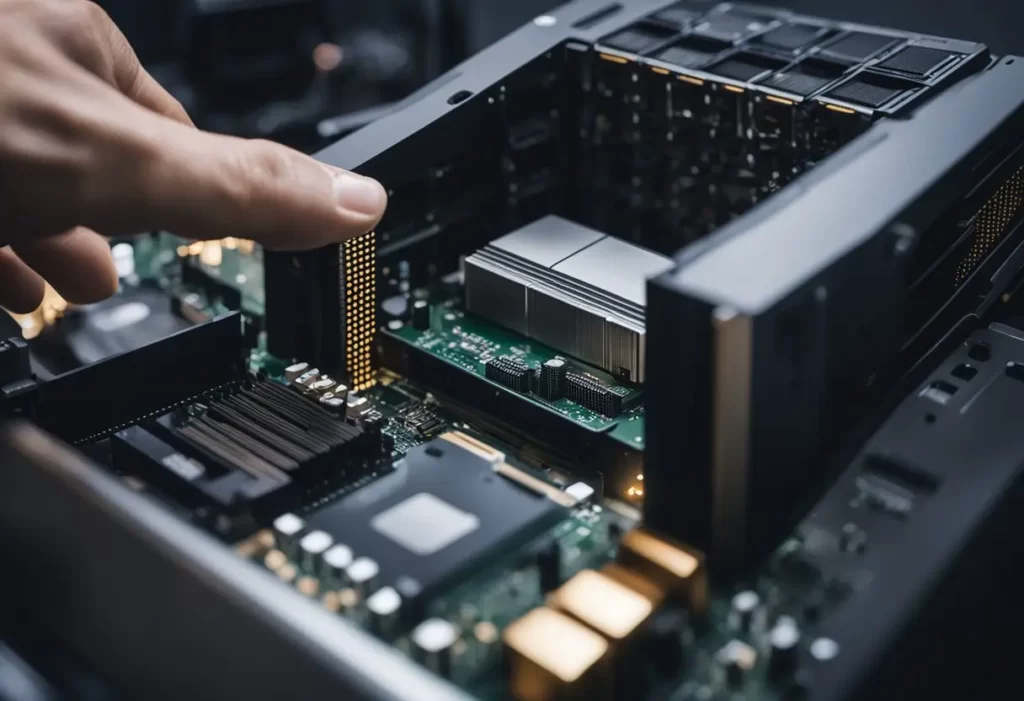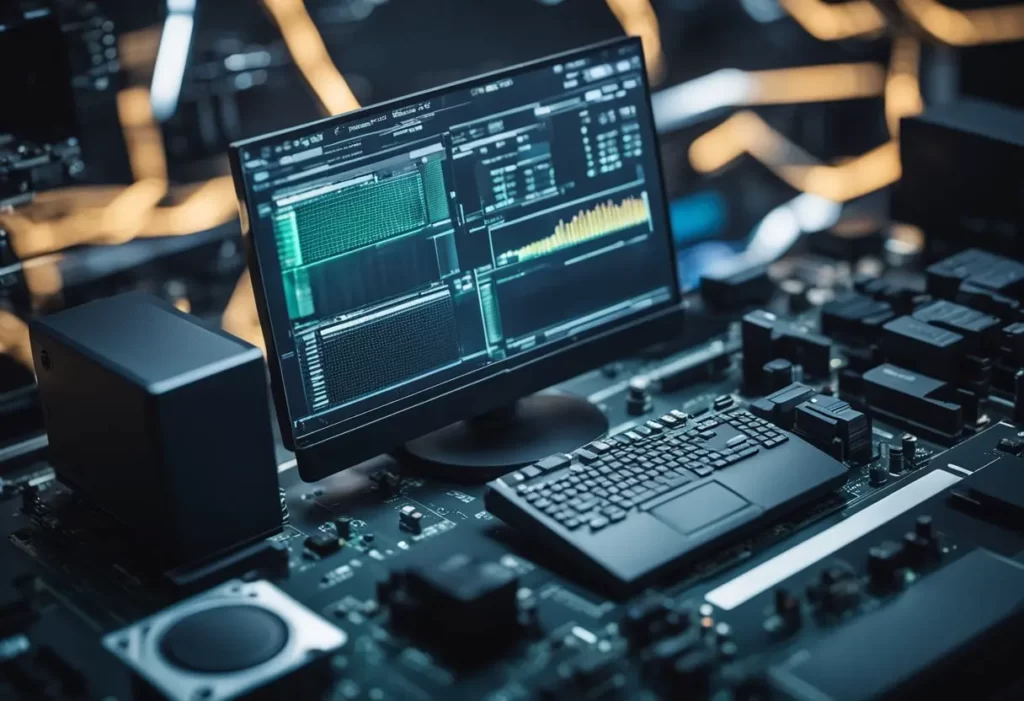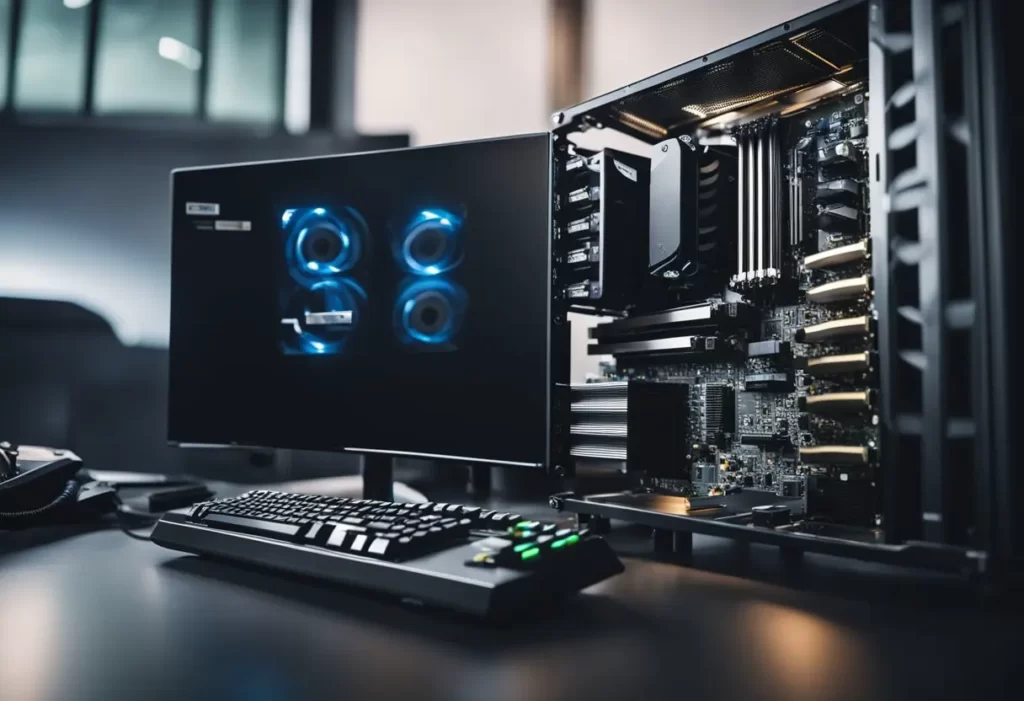Graphics cards are an essential component of any computer system that is used for gaming, video editing, or other graphics-intensive tasks. However, over time, these cards can slow down due to various factors such as outdated drivers, poor airflow, and background processes. In this article, we will discuss several ways to speed up your graphics card and improve its performance.
Understanding Graphics Card Performance is crucial to optimizing it. Graphics cards work by rendering images and videos and then displaying them on the screen. The performance of a graphics card is measured by its clock speed, memory, and the number of processing cores it has. The clock speed determines how fast the card can process data, while the memory determines how much data it can store. The number of processing cores determines how many calculations the card can perform simultaneously. By understanding these factors, you can better optimize your graphics card for maximum performance.
Key Takeaways
- Overclocking your graphics card can improve its performance, but it can also cause damage if done incorrectly.
- Upgrading graphics card drivers can improve performance and fix bugs.
- Optimizing in-game settings, improving airflow and cooling, and reducing background processes can also improve graphics card performance.
Understanding Graphics Card Performance

Graphics cards are an essential component of any computer system that is used for gaming or graphic-intensive tasks. The performance of a graphics card is measured by its ability to render images and video, and it is determined by several factors, including clock speed, memory bandwidth, and processing power.
Clock speed is the frequency at which the graphics card’s processor operates, and it is measured in MHz or GHz. The higher the clock speed, the faster the processor can perform calculations and render images. Memory bandwidth is the amount of data that can be transferred between the graphics card’s memory and the processor, and it is measured in GB/s. The higher the memory bandwidth, the faster the graphics card can access and transfer data.
Processing power is another important factor that determines the performance of a graphics card. It is measured in Floating Point Operations Per Second (FLOPS) and is a measure of the number of calculations that a graphics card can perform per second. The higher the FLOPS, the faster the graphics card can perform calculations and render images.
To optimize the performance of a graphics card, it is important to keep its drivers updated. Graphics card manufacturers release regular driver updates that improve performance, fix bugs, and add new features. It is also important to ensure that the computer’s cooling system is working properly, as graphics cards can generate a significant amount of heat during operation.
In addition, users can overclock their graphics cards to increase their performance. Overclocking involves increasing the clock speed and voltage of the graphics card beyond its factory settings. However, this can also increase the temperature of the graphics card and reduce its lifespan if not done correctly.
By understanding the factors that determine the performance of a graphics card, users can optimize their systems for maximum performance and ensure that they get the best possible experience when gaming or performing graphic-intensive tasks.
Overclocking Your Graphics Card

Overclocking is the process of increasing the clock speed of your graphics card beyond its factory settings to achieve better performance. However, it is important to note that overclocking can cause damage to your graphics card if not done properly. Here are some important steps to follow when overclocking your graphics card.
Benchmarking Before Overclocking
Before overclocking, it is important to benchmark your graphics card to determine its current performance level. This will help you to identify any changes in performance after overclocking. There are several benchmarking tools available such as 3DMark and Unigine Heaven Benchmark that can help you to determine your graphics card’s current performance level.
Overclocking Tools and Software
To overclock your graphics card, you will need to use an overclocking tool or software. There are several overclocking tools available such as MSI Afterburner, EVGA Precision X1, and ASUS GPU Tweak II that can help you to overclock your graphics card. These tools allow you to adjust the clock speed, voltage, and fan speed of your graphics card.
Incremental Overclocking Process
Overclocking should be done in small increments to avoid damaging your graphics card. Start by increasing the clock speed by a small amount, such as 10 MHz, and then run a benchmark to test for stability. If the benchmark runs without any issues, increase the clock speed by another 10 MHz and repeat the process until you reach the desired performance level. It is important to monitor the temperature of your graphics card during the overclocking process to avoid overheating.
Testing for Stability and Heat Management
After overclocking, it is important to test for stability and heat management. Run a benchmark or play a game for an extended period of time to test for stability. If you experience any crashes or artifacts, decrease the clock speed until stability is achieved. Additionally, monitor the temperature of your graphics card during use to ensure that it does not overheat. If the temperature is too high, decrease the clock speed or increase the fan speed to manage the heat.
By following these steps, you can safely overclock your graphics card to achieve better performance. However, it is important to note that overclocking can cause damage to your graphics card if not done properly. Always monitor the temperature of your graphics card and test for stability after overclocking.
Upgrading Graphics Card Drivers

One of the most effective ways to speed up your graphics card is to upgrade its drivers. Graphics card manufacturers such as Nvidia and AMD release regular updates to their drivers that can improve performance, fix bugs, and add new features. Here are some steps to help you upgrade your graphics card drivers:
Identifying Your Graphics Card Model
Before you can upgrade your graphics card drivers, you need to know the model of your graphics card. You can identify your graphics card model by opening the Device Manager on Windows or the System Information app on macOS. Once you have identified your graphics card model, you can proceed to the next step.
Finding the Latest Drivers
To find the latest drivers for your graphics card, you can visit the website of your graphics card manufacturer. Nvidia and AMD both have websites where you can download the latest drivers for their graphics cards. Alternatively, you can use a driver updater tool that can automatically scan your system and download the latest drivers for your graphics card.
Proper Installation Techniques
Once you have downloaded the latest drivers for your graphics card, you need to install them properly. It is recommended to uninstall the old drivers before installing the new ones, as this can prevent conflicts and improve performance. You can uninstall the old drivers using the Device Manager on Windows or the uninstaller app on macOS. After uninstalling the old drivers, you can install the new ones by running the installer file and following the on-screen instructions.
By upgrading your graphics card drivers, you can get the latest features and improvements, and potentially improve the performance of your graphics card.
Optimizing In-Game Settings
When it comes to optimizing in-game settings, there are a few things that can be done to ensure that your graphics card is running at its best. Here are some tips to help you get the most out of your GPU.
Adjusting Resolution and Quality
One of the easiest ways to improve performance is by adjusting the resolution and quality settings in your game. Lowering the resolution can greatly improve performance, but it will also make the game look less sharp. Similarly, reducing the quality settings can also help improve performance, but it may also reduce the overall visual fidelity of the game. Finding the right balance between performance and visual quality is key.
Disabling Unnecessary Features
Many games come with a variety of features that can be disabled to help improve performance. For example, turning off anti-aliasing can greatly improve performance, but it may also make the game look more jagged. Similarly, disabling shadows and reflections can also help improve performance, but it may also reduce the overall visual quality of the game. Disabling unnecessary features can help free up resources and improve performance.
Custom Profiles for Games
Finally, creating custom profiles for each game can help ensure that your graphics card is optimized for that particular game. By creating a custom profile, you can adjust settings specifically for that game, rather than relying on default settings. This can help ensure that your graphics card is running at its best for each game, rather than using a one-size-fits-all approach.
In summary, optimizing in-game settings can greatly improve performance and help ensure that your graphics card is running at its best. Adjusting resolution and quality, disabling unnecessary features, and creating custom profiles for each game are all effective ways to optimize your GPU.
Improving Airflow and Cooling

When it comes to improving the performance of a graphics card, one of the most important factors to consider is airflow and cooling. Proper cooling ensures that the GPU doesn’t overheat, which can cause performance issues and even damage the hardware.
Case Ventilation Strategies
One of the easiest ways to improve airflow and cooling is to optimize the case ventilation. Good case ventilation ensures that cool air is brought in and hot air is expelled efficiently. This can be achieved by placing fans in strategic locations around the case, such as in the front, back, and top.
It’s important to note that not all cases are created equal. Some cases may have better ventilation than others, so it’s important to choose a case that has good ventilation if you’re planning to build a high-performance system. Additionally, cable management can also play a role in improving airflow, as cables can obstruct airflow and create hot spots.
Aftermarket Cooling Solutions
If you’re looking to push your graphics card to its limits, then aftermarket cooling solutions may be necessary. Aftermarket cooling solutions include things like aftermarket GPU coolers and water cooling systems. These solutions can help to dissipate heat more efficiently and can allow you to overclock your GPU without worrying about overheating.
Before purchasing an aftermarket cooling solution, it’s important to make sure that it’s compatible with your graphics card. Additionally, these solutions can be expensive, so it’s important to weigh the cost against the potential performance gains.
Maintaining Optimal Temperature
Finally, it’s important to make sure that your graphics card is running at an optimal temperature. Most GPUs have a maximum safe temperature, and if the temperature exceeds this limit, the GPU will throttle its performance to prevent damage.
To maintain an optimal temperature, it’s important to monitor your GPU’s temperature regularly. There are many software tools available that can help you monitor your GPU’s temperature, such as MSI Afterburner and GPU-Z. Additionally, make sure that your case is free of dust and debris, as this can obstruct airflow and cause the GPU to overheat.
Reducing Background Processes
To improve the performance of a graphics card, it is important to reduce the number of resource-heavy applications running in the background. This section will cover some tips on how to identify and manage these applications.
Identifying Resource-Heavy Applications
The first step in reducing background processes is to identify which applications are consuming the most resources. Users can open the Task Manager on Windows or the Activity Monitor on macOS to view a list of running processes and their resource usage. In the Task Manager, users can sort processes by CPU, memory, disk, or network usage to identify the most resource-intensive applications.
Configuring Startup Programs
Another way to reduce background processes is to configure which programs start automatically when the computer boots up. Users can access the Startup tab in the Task Manager on Windows or the Login Items tab in the Users & Groups section of System Preferences on macOS to manage startup programs. Disabling unnecessary programs from starting up can help reduce the overall number of background processes and improve graphics card performance.
Operating System Tweaks
Finally, users can make some tweaks to their operating system settings to further reduce background processes. For example, disabling visual effects such as transparency and animations can help reduce the load on the graphics card. Users can also adjust the power settings to prioritize performance over energy savings, which can help improve graphics card performance.
By reducing the number of resource-heavy applications running in the background, configuring startup programs, and making some operating system tweaks, users can improve the performance of their graphics card.
Upgrading Hardware Components
Upgrading hardware components can be an effective way to speed up your graphics card. However, before making any upgrades, it is important to consider compatibility and potential bottlenecks.
Compatibility and Bottlenecks
When upgrading hardware components, it is important to ensure compatibility with your existing system. For example, if you plan to upgrade your graphics card, you should check that your motherboard has a compatible slot, and that your power supply can handle the increased power demands.
It is also important to consider potential bottlenecks in your system. For example, upgrading your graphics card may not result in a significant performance boost if your CPU or RAM are limiting factors. In general, it is best to aim for a balanced system where all components are of similar performance levels.
Memory and GPU Upgrades
Upgrading your graphics card’s memory or GPU can be a great way to improve performance. Adding more memory can help your graphics card handle larger textures and more complex scenes, while upgrading the GPU can provide more processing power.
When upgrading your graphics card’s memory or GPU, it is important to consider the specifications of your existing card. For example, if your current card has a low memory bandwidth, upgrading to a card with more memory may not provide a significant performance boost.
Power Supply Considerations
When upgrading hardware components, it is important to consider the power demands of your new components. Upgrading to a more powerful graphics card, for example, may require a higher wattage power supply.
It is important to choose a power supply that can handle the power demands of your new components, while also leaving some headroom for future upgrades. A power supply that is too weak can cause stability issues and potentially damage your hardware.
Overall, upgrading hardware components can be an effective way to speed up your graphics card, but it is important to consider compatibility, potential bottlenecks, and power supply considerations before making any upgrades.
Code: NEWCAMPAI3444#11You might also like
